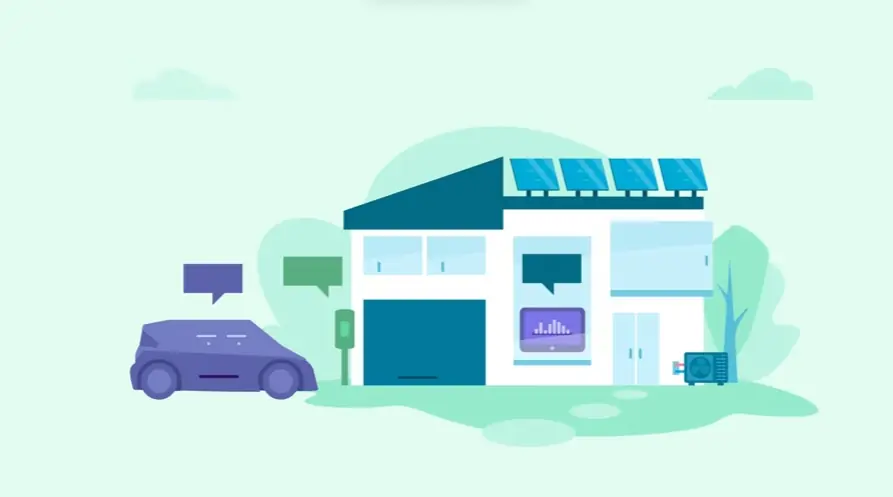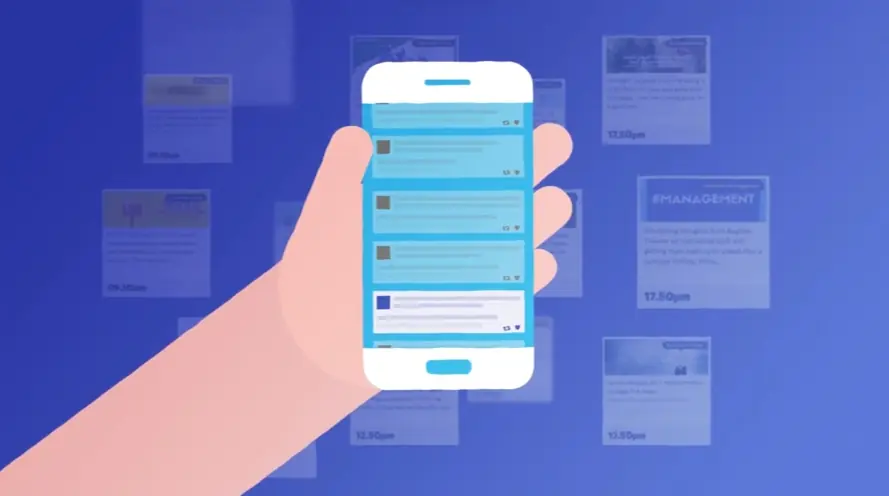
How should we plan a software product tutorial video series for user onboarding?
Structure a software tutorial series by analyzing the software and target audience. Create focused videos on key features and user journeys for seamless onboarding.
What pre-production steps are crucial for a successful software demo video?
Crucial pre-production steps for demo videos: define objectives, target audience, script a narrative, create a visual style guide, and plan recordings/animations.
What narrative structures work best for engaging software tutorial videos?
Effective narrative structures for tutorials: problem-solution, chronological workflows, and feature-benefit presentations, tailored to the software and audience.
How can we effectively showcase complex software features in a tutorial video?
Showcase complex features by breaking them down into steps, using screen recordings, animations, and clear explanations. Visual aids and examples enhance understanding.
What are the best practices for scripting a clear and concise software product demo?
Scripting best practices: focus on user benefits, clear language, key features, and a compelling call to action.
How do we determine the ideal visual style for our target audience in a tutorial?
Determine visual style by analyzing the target audience, brand guidelines, and software aesthetic. A style guide ensures consistency and appeal.
How can customer testimonials enhance the credibility of software demo videos?
Customer testimonials build trust. Integrate real-world success stories into demos to showcase user satisfaction.
What are key considerations for branding in software product tutorial videos?
Branding considerations: consistent logo, color palette, and messaging throughout tutorial videos.
How do leading SaaS companies utilize tutorial videos in their marketing funnels?
SaaS companies use tutorials across marketing funnels—product pages, emails, social media—to drive engagement and conversions.
When are animated explainer videos most effective for software products?
Animated explainers are effective for introducing complex concepts, simplifying workflows, and highlighting benefits visually.
How can we adapt successful competitor application demo video strategies?
Analyze competitor demo videos to identify successful strategies, understand market trends, and differentiate your product.
How do we ensure global accessibility for our software tutorial videos?
Ensure global accessibility with subtitles, captions, and multilingual voiceovers (78 languages available).
What's the best way to incorporate a compelling call to action in a product demo?
Compelling calls to action should be clear, concise, and relevant, guiding users to the next step (free trial, purchase).
How can we leverage existing assets when planning a software tutorial video?
Leverage existing assets like screen recordings, marketing materials, and product documentation for streamlined production.
What are common pitfalls to avoid when creating a software training video?
Avoid pitfalls like technical jargon, cluttered visuals, and unclear objectives. Create concise, engaging, user-centric tutorials. Typical project timelines range from 3-8 weeks, with fixed-fee pricing from $1000-$6000 depending on complexity.
Mastering Screen Recording and Visual Clarity
Mastering the creation of an effective Software Product Tutorial Video involves honing the visual and auditory elements. Beyond the script and story, viewers connect deeply with what they see and hear on screen. They seek clarity, precision, and a seamless guide through software functionalities. Achieving this requires deliberate attention to the technical craft of capturing action and presenting information visually.
To lay this foundation, screen recording requires careful planning. Creators first map out key steps and talking points, ensuring the on-screen action aligns perfectly with the narrative. Running test recordings becomes essential; this allows verification of camera settings, microphone levels, and overall visual framing before committing to the final capture. Minimizing distractions on the desktop like clutter and notifications cleans up the viewer's experience, keeping focus strictly on the software demonstration.
Record at optimal resolutions, like 1080p or even 4k for intricate interfaces, mirroring the target display for crisp detail, and consider 60 frames per second for smoother on-screen motion, especially with dynamic elements.
Employ annotations and callouts selectively; visual cues like arrows, shapes, or highlighted areas strategically draw the viewer's eye to critical fields or buttons without cluttering the screen, guiding them through complex steps effortlessly.
Apply chunking techniques by breaking down instructions into small, digestible units; use clear, concise language, short sentences, numbered lists or bullet points within the video's text overlays or voiceover pacing to make information recall simpler.
Ensure high-quality audio using an external microphone in a quiet environment to minimize background noise; the voiceover script should feel conversational and align precisely with the on-screen actions, balanced with low-volume background music that supports the tone without distracting.
By focusing on these aspects of screen capture, visual aids, and audio quality, creators significantly enhance viewer understanding and engagement, making complex software accessible and easy to master.
Why Advids for Software Product Tutorial Video?
At Advids, we create compelling Software Product Tutorial Videos that drive results. Our blend of creative storytelling, advanced technology, and proven experience ensures your vision translates into effective and engaging tutorials. We've completed over 3400 successful projects for clients ranging from startups to Fortune 500 companies, including brands like Razorpay, Ola, Mercedes, the United Nations, Continental, and Mercer. Our commitment to excellence is reflected in over 109 five-star Google reviews.
Unlocking the Power of Tutorial Videos:
Customized Software Product Tutorial Video Solutions: We tailor each project, whether it's a concise explainer video or a comprehensive walkthrough, to resonate with your specific audience and showcase your software's functionality.
Creative Storytelling for Tutorials: Our team crafts narratives that simplify complex processes, making your software easy to understand and use.
Engaging Your Audience: We use animation to capture attention and enhance learning, ensuring your tutorial videos are both informative and enjoyable.
245+ Successful Software Tutorial Videos: We've helped numerous businesses effectively onboard users, reduce support costs, and drive product adoption through impactful tutorial videos.
Our Expertise & Collaborative Approach:
12+ Years of Proven Success: Our extensive experience in video production translates to effective tutorial videos that achieve your business objectives.
Cutting-Edge Technology: We utilize the latest software and techniques to create visually stunning and high-impact tutorials.
Collaborative Partnership: We work closely with you throughout the entire process, from initial concept to final delivery, ensuring your vision is realized.
Strategic Communication: We prioritize clear communication to understand your needs, target audience, and software's key features, resulting in tutorials that truly resonate.
Ready to unlock the potential of Software Product Tutorial Video for your business with the latest video design trends of 2024? Let Advids be your trusted partner in transforming your ideas into engaging and effective animated experiences.
Checkout some of the projects and work our team at Advids has been producing:
What is a Software Product Tutorial Video?
A software product tutorial video is a digital guide that visually demonstrates how to use a specific software application or its features. These videos aim to educate users, improve their understanding of the software's functionalities, and empower them to achieve their desired outcomes. tutorial videos can range from simple overviews to in-depth walkthroughs of complex processes. They are a valuable resource for both new and experienced users, providing a convenient and engaging way to learn and master software tools.
Tutorial videos can be used in various ways, including onboarding new users, providing support and troubleshooting common issues, showcasing the software's features and benefits to potential customers, and even training existing users on advanced functionalities. They can be integrated into marketing campaigns, customer support resources, and even as part of a company's internal training program.
What do top Software Product Tutorial Videos have in common?
Mastering software tutorial videos requires focusing on user needs and showcasing tangible value.
Defined Software Goal - Craft a concise, impactful statement of the software's core value. Best practice: Focus on user benefit, not just features.
- Target User Persona - Develop a detailed user profile, including pain points and motivations. Best practice: Use this to tailor the video's language and tone.
- Step-by-Step User Guide - Create a visually engaging guide that's easy to follow. Best practice: Use on-screen annotations and visual cues.
- Problem/Solution Clarity - Show how the software directly addresses user needs. Best practice: Start with the problem, then present the solution.
- Feature Prioritization - Highlight only the most crucial features, avoiding information overload. Best practice: Focus on features that solve the core problem.
- Actionable Screen Recording - Use high-quality recordings that are concise and easy to understand. Best practice: Show the software in action, not just static screenshots.
- Narrative Engagement - Create a compelling story that resonates with viewers emotionally. Best practice: Use relatable characters and scenarios.
- Practical Use Cases - Demonstrate the software's value through real-world examples. Best practice: Show how the software improves efficiency or productivity.
- Quantifiable Success - Use data and metrics to demonstrate the software's impact. Best practice: Use charts and graphs to visualize results.
- Compelling CTA - Include a clear and concise call to action that encourages viewers to take the next step. Best practice: Make the CTA easy to find and visually appealing.
What makes Software Product Tutorial Video effective?
A well-executed Software Product Tutorial Video enhances user understanding and engagement. Specific elements create a seamless learning experience: logical information flow, consistent visual style, and smooth transitions. A pre-production phase defines software functionality scope, understanding the target audiences technical proficiency and learning preferences. The design should prioritize an intuitive and engaging learning process.
Visual elements?screen recordings, kinetic typography, micro-interactions, and animations?highlight key features. A compelling narrative using storytelling engages viewers. Professionals leverage storyboarding to plan visual engagement. Clear, concise language and logical structure are essential. Complex tasks are broken into smaller steps using chunking and progressive disclosure.
Post-production integration of interactive elements?quizzes, embedded links, or downloadable resources?reinforces learning. These elements encourage user engagement beyond passive viewing. Clear calls to action further enhance engagement. Effective videos maintain concise length, tailored to the software features complexity, with pacing that balances information density and viewer comprehension.
Professional post-production, including editing, color correction, and sound design, enhances the learning experience and projects credibility. The result is effective software product tutorial videos.
How long should your Software Product Tutorial Video be?
Optimize software tutorial video length for maximum impact by aligning video type, content, and viewer engagement.
Pre-production Considerations for Determining Video Length:
- What's the video's core objective?
- Who is the intended audience?
- Which features need highlighting?
- How intuitive is the software?
- Where will the video be hosted?
- What's the video's target funnel stage?
- What style best suits the message?
Software product tutorial video length guide
| Software Product Tutorial Types | Video Length | Use Case | Funnel |
|---|
| Screen Recording | 1-2 minutes | Captures software usage directly, ideal for demonstrating simple workflows Shows step-by-step actions | Awareness/Consideration |
| Animated Screencast | 45-90 seconds | Highlights key features with engaging visuals, simplifies complex processes Uses clear animations | Consideration/Conversion |
| Product Walkthrough | 1-2 minutes | Comprehensive overview of all features, suitable for in-depth understanding | Consideration/Conversion |
| Quick Start Guide | 30-60 seconds | Focuses on immediate value, guides users through initial setup and basic use | Awareness/Consideration |
| Feature Spotlight | 15-30 seconds | Showcases a specific feature's benefits, ideal for targeted marketing efforts Uses concise and impactful visuals | Conversion/Retention |
How to create Software Product Tutorial Videos?
Crafting compelling software tutorial videos requires a strategic approach that prioritizes user understanding and engagement. Mastering the pre-production and production phases is key to creating effective UI demo videos that drive results.
* Target audience analysis - Tailor the video's language, pace, and complexity to resonate with the specific user group.- Define Video Goals - Focus on measurable outcomes like increased user adoption or improved task completion rates.
- Detailed Scriptwriting - Use concise language, clear instructions, and a logical structure for optimal understanding.
- Comprehensive Storyboarding - Storyboard each screen recording, animation, and text element for a smooth workflow.
- Visual Style Definition - Maintain consistency in branding, color palettes, and visual elements for a professional look.
- Professional Screen Recording - Use high-resolution recordings with clear visuals and smooth transitions.
- engaging animation Design - Use animations to highlight key features, simplify complex processes, and add visual interest.
- Clear On-Screen Text - Use concise, easy-to-read text that complements the voiceover and visual elements.
- Polished Voice Recording - A clear, professional voiceover guides viewers and enhances the learning experience.
- Expert Video Editing - Use smooth transitions, clear call-outs, and a well-paced editing style to create a compelling video.
The Importance of Storytelling in Software Product Videos
Moving beyond technical specifications and feature demonstrations, let's explore the transformative power of storytelling in software product videos. Storytelling elevates these videos from mere explanations to engaging experiences that resonate with viewers . Think about how saas onboarding videos can transform a tedious setup process into an engaging narrative, guiding new users with a relatable story. By humanizing technology, we create a deeper connection with our audience.
Effective storytelling simplifies complex ideas . Instead of overwhelming viewers with technical jargon , we can use narratives to break down concepts into easily digestible pieces. Consider how top software product videos often use this technique to explain intricate features in a way that everyone can understand. This approach not only clarifies functionality but also showcases the software's value by demonstrating its real-world impact.
- Show, don't just tell. Instead of simply stating that your software solves a problem, show it in action through a compelling user story . Imagine an application tutorial video example where a character struggles with a task and then effortlessly completes it using your software.
- build trust by sharing authentic user experiences . testimonials and case studies woven into a narrative can create a powerful emotional connection with viewers. This is particularly effective in marketing videos for software, where building credibility is essential.
- Drive action by inspiring viewers with a clear call to action embedded within the narrative. A compelling story can motivate viewers to explore the software further and ultimately become customers.
- Craft stories that resonate with your target audience. By leveraging user personas , we can tailor our narratives to address specific needs and motivations, making the message more impactful.
Storytelling isn't just about entertainment; it's a powerful tool for connecting with viewers, building trust, and driving conversions. By weaving compelling narratives into our software product videos, we can transform technical demonstrations into engaging experiences that resonate with our audience and ultimately achieve our marketing goals.
Measuring the Effectiveness of Software Tutorial Videos
Let's explore how we can measure the success of our software tutorial videos. We've put in the effort to create compelling content, now let's ensure it's making a real impact. This isn't just about vanity metrics; it's about understanding what resonates with our audience and refining our approach.
Think about it: when creating SaaS product tutorial video examples, we're aiming to guide users seamlessly through the software. Analyzing metrics like user retention and conversion rates tells us how effectively we're achieving that goal. Similarly, exploring software onboarding video examples can reveal best practices for engaging new users.
- Track Engagement : Are viewers actually watching our videos? Metrics like views and play rate give us a sense of overall reach and how captivating our content is. A high play rate suggests we've hooked our audience, while a low one might indicate we need to rethink our approach.
- Measure Impact : Effective software demo videos drive conversions by showcasing key features and benefits in a compelling way. Tracking click-through rates and conversions tells us if our calls to action are resonating and leading to desired outcomes.
- Gather Feedback : Numbers tell part of the story, but user feedback provides invaluable qualitative insights. Surveys, comments, and even support tickets can reveal areas for improvement and help us understand the user experience. Software training videos, for example, aim to improve user proficiency. Tracking task completion rates and monitoring support tickets can assess their effectiveness.
- Analyze and Adapt: Regularly reviewing these metrics allows us to refine our strategy. A/B testing different versions of our videos can help us identify what resonates best with our audience. Analyzing competitor videos, especially successful ones, can also provide valuable inspiration.
By consistently monitoring and analyzing these metrics, we can ensure our software tutorial videos are not only engaging but also driving meaningful results .
Using Data to Drive Decisions in Software Tutorial Design
Data isn't just numbers; it's the compass guiding us toward creating truly effective software tutorial videos. By understanding viewer behavior, we can tailor our content to resonate deeply, maximizing engagement and achieving our goals. Let's explore how data empowers us to make smarter decisions in tutorial design. For instance, software product explainer video examples often showcase a user's journey, highlighting pain points and demonstrating how the software provides solutions.
Imagine a product tutorial animation example where a character struggles with a task and then effortlessly completes it using your software. This showcases the software's value in a relatable way. Effective product explainer videos focus on the 'why' behind the product, not just the 'what,' resonating with viewers on an emotional level. product animation videos can transform mundane product demonstrations into captivating stories, leaving a lasting impression on viewers.
- Analyze video completion rates and identify drop-off points to optimize pacing and content.
- Track engagement metrics like likes, shares, and comments to understand audience preferences.
- Use A/B testing to compare different video styles and identify what resonates best with your target audience.
- Gather user feedback through surveys and comments to gain valuable insights for continuous improvement.
By leveraging data, we transform guesswork into informed decisions, creating software tutorial videos that truly connect with our audience and drive results.
Creating Compelling Calls to Action in Software Tutorials
Let's talk about creating calls to action that truly convert. We've analyzed data, understood our audience, and crafted compelling narratives. Now, let's guide viewers towards the desired action. Think of your CTA as the bridge between engagement and conversion. It's the final nudge that transforms a passive viewer into an active user.
Effective CTAs aren't generic; they're tailored to the specific video and target audience. A product demo video might encourage a free trial signup , while an application tutorial video might guide users to further resources. Consider product feature videos where a CTA like "See [Feature] in Action" leads viewers to a more in-depth demonstration. The best software tutorial videos seamlessly integrate CTAs within the narrative, making the next step feel natural.
- Clarity is key: Use strong action verbs and concise language. " Get Started " is more compelling than "Learn More."
- Value proposition: Highlight the benefit viewers receive. "Boost Productivity" resonates more than "Click Here."
- Strategic placement: Experiment with pre-roll, mid-roll, and end-screen CTAs . Software demo video examples often showcase effective placement strategies.
- Data-driven optimization : Track click-through rates and use A/B testing to refine your approach.
By aligning CTAs with video goals, user needs, and overall marketing efforts, we ensure a cohesive and effective user journey. Remember, a compelling CTA isn't just a button; it's an invitation to engage deeper with your software and experience its value firsthand.
Author & Editor Bio
A video producer with a passion for creating compelling video narratives, Jai Ghosh brings a wealth of experience to his role. His background in Digital Journalism and over 11 years of freelance media consulting inform his approach to video production. For the past 7 years, he has been a vital part of the Advids team, honing his expertise in video content planning, creation, and strategy.
His collaborative approach ensures that he works closely with clients, from startups to enterprises, to understand their communication goals and deliver impactful video solutions. He thrives on transforming ideas into engaging videos, whether it's a product demo, an educational explainer, or a brand story.
An avid reader of modern marketing literature, he keeps his knowledge current. Among his favorite reads from 2024 are "Balls Out Marketing" by Peter Roesler, "Give to Grow" by Mo Bunnell and "For the Culture" by Marcus Collins. His results-driven approach ensures that video content resonates with audiences and helps businesses flourish.




